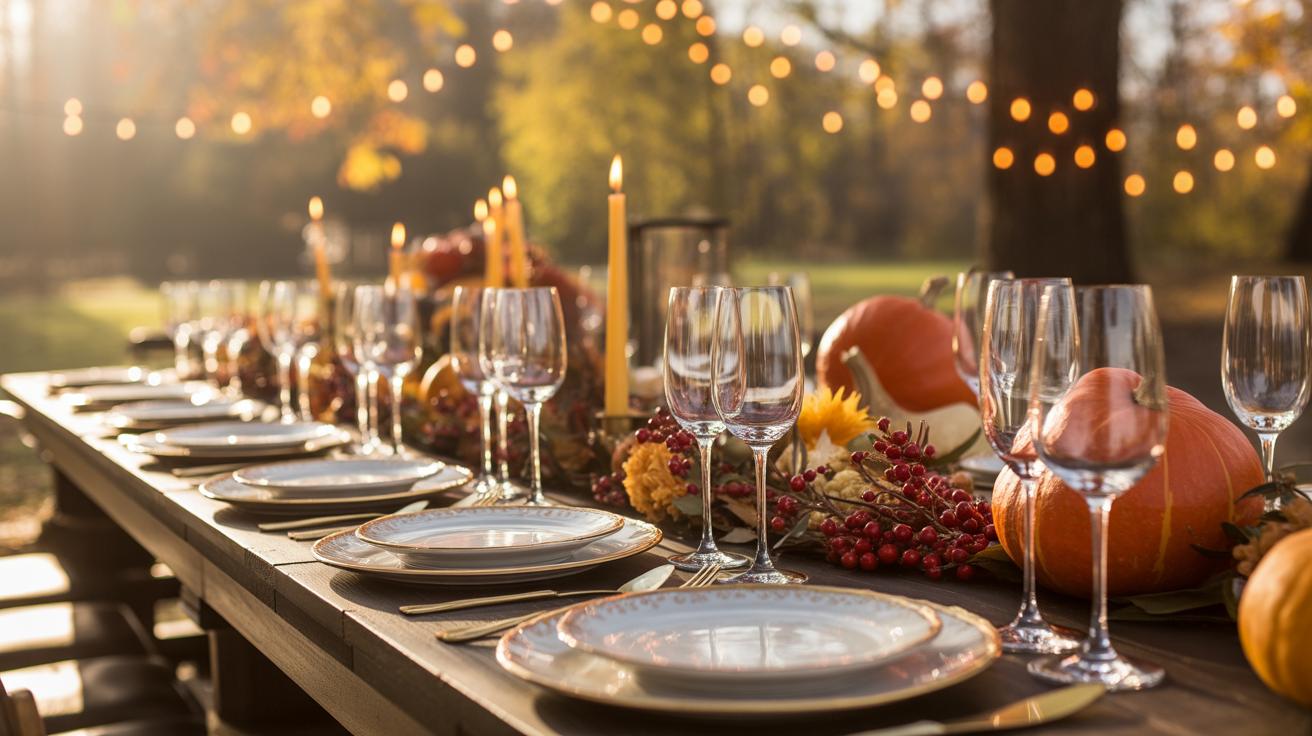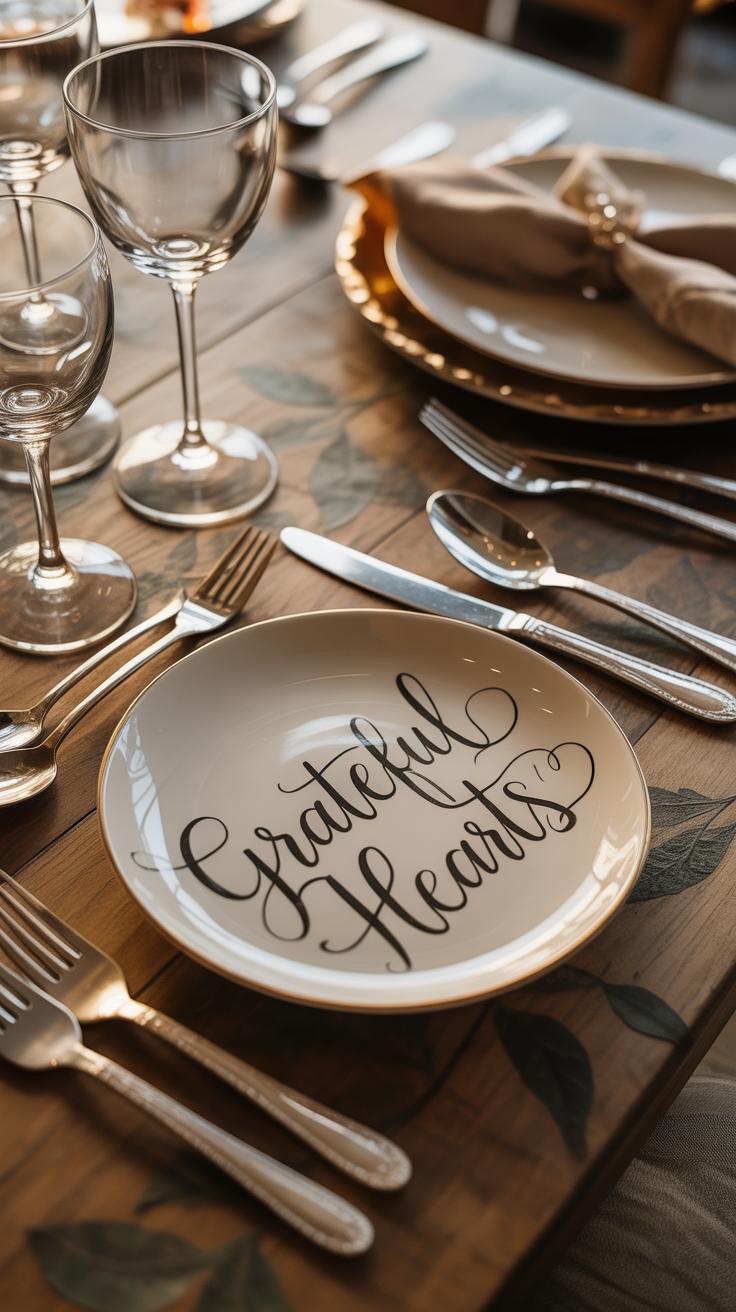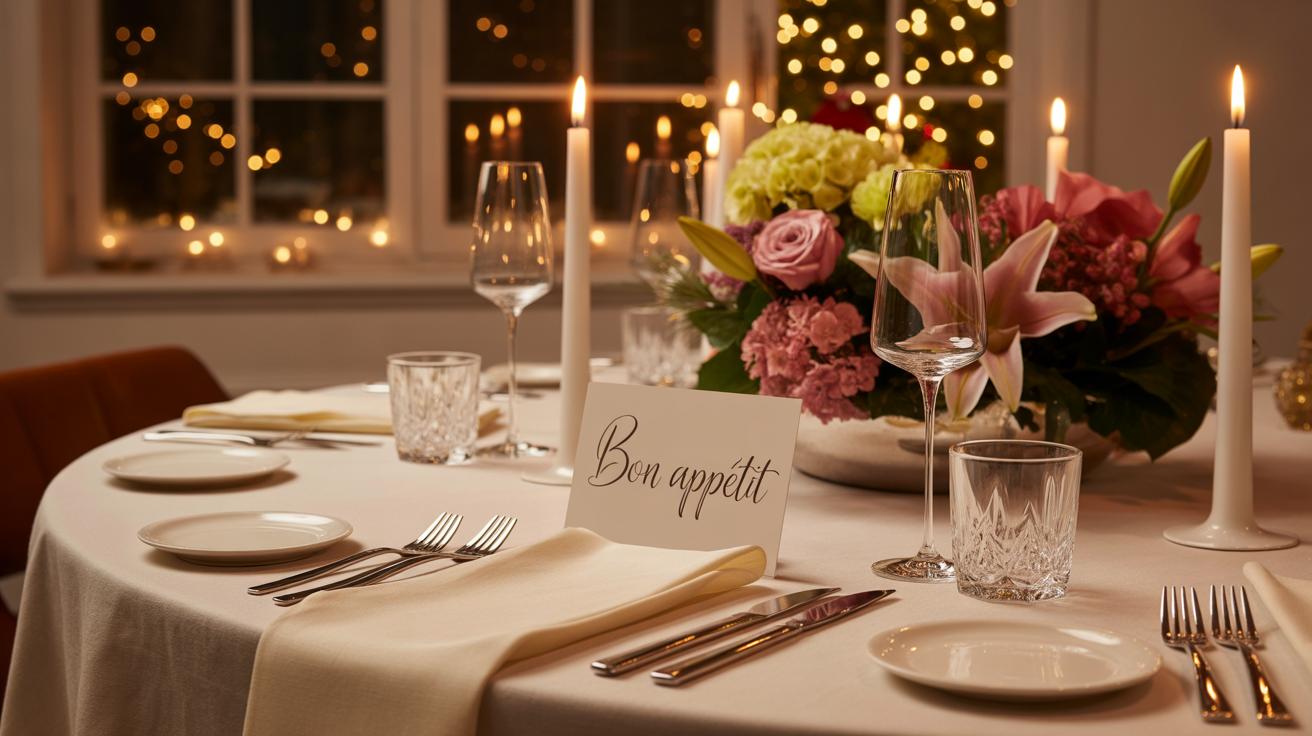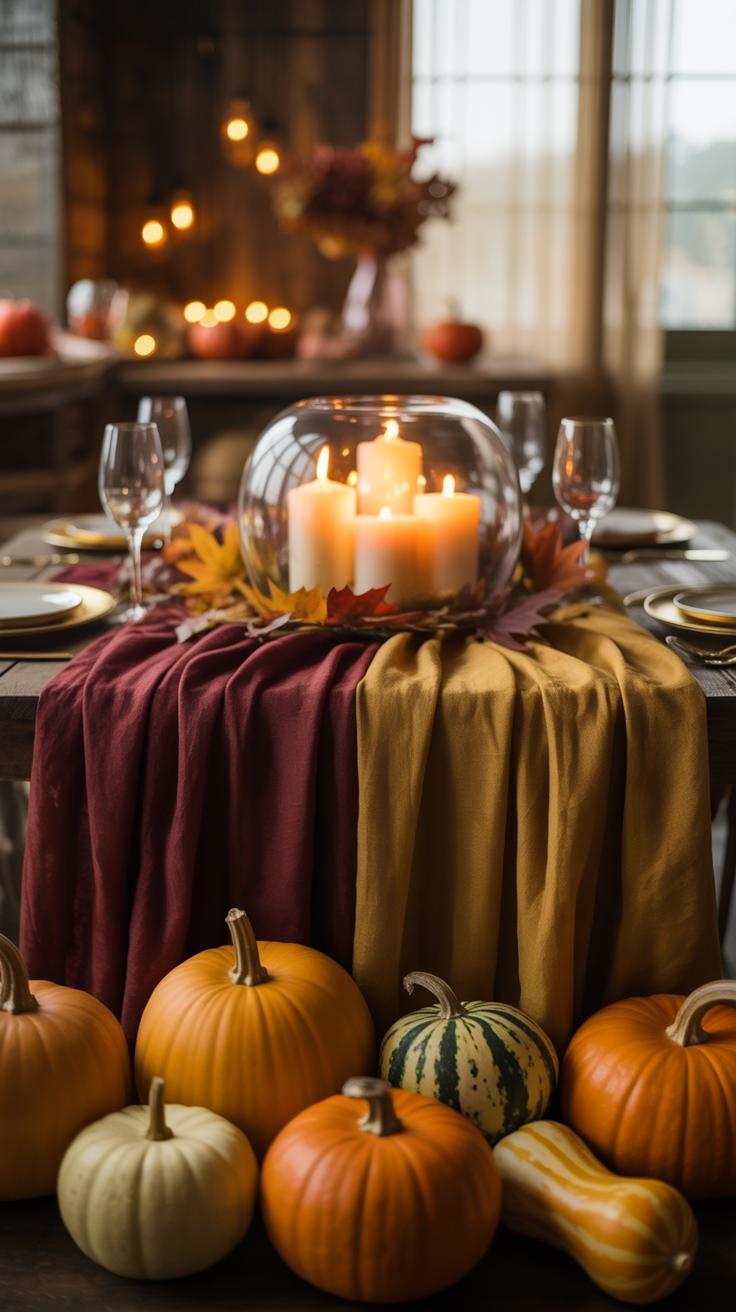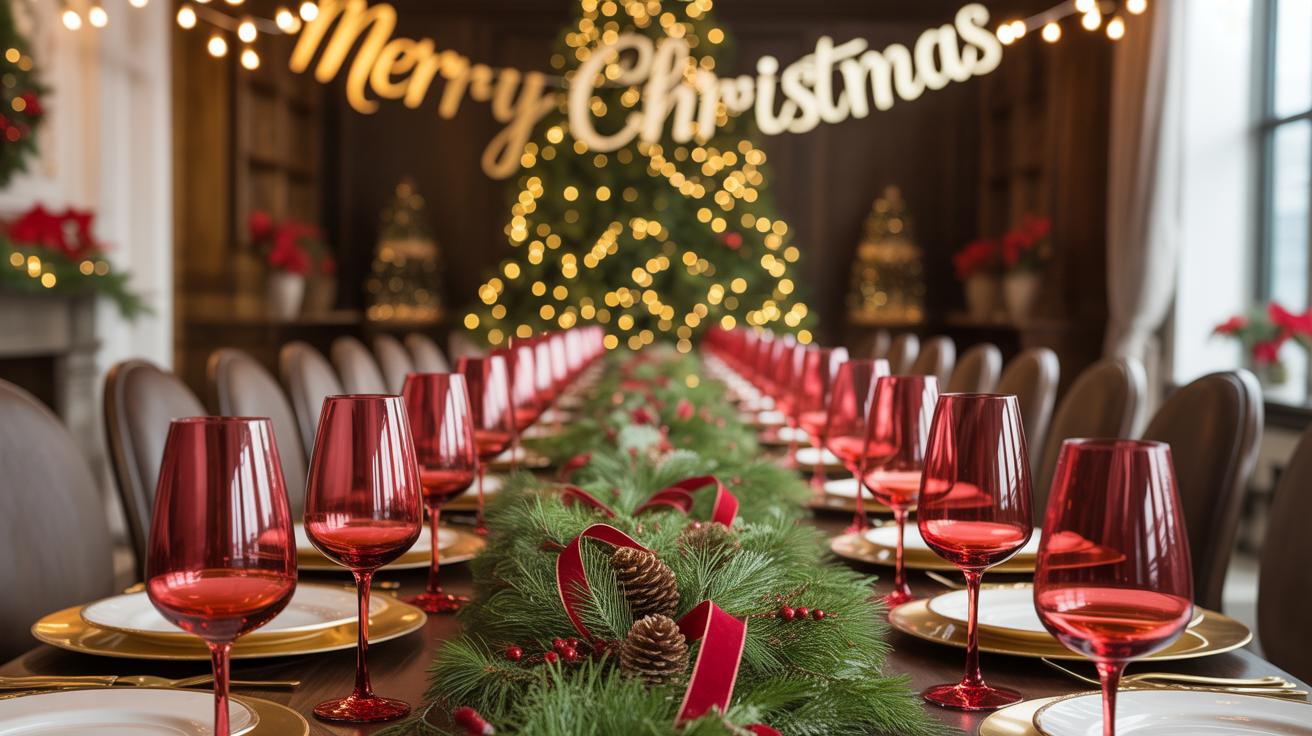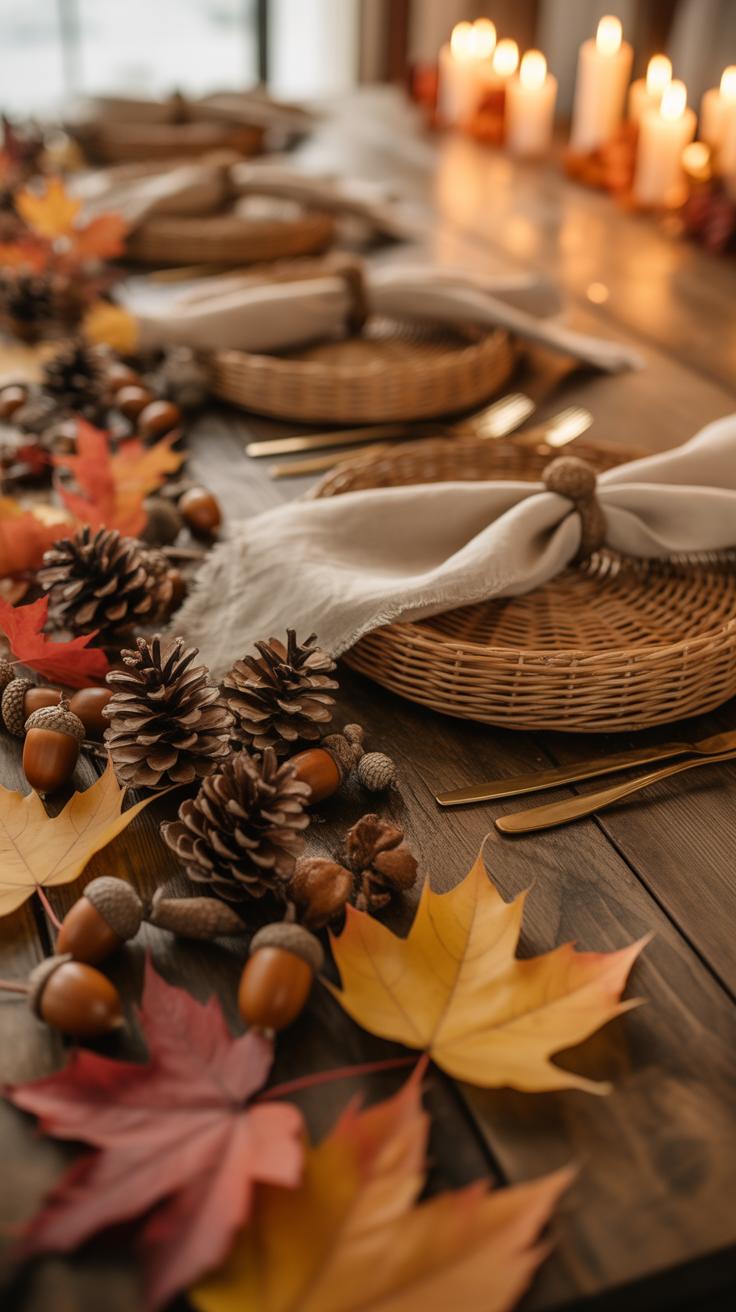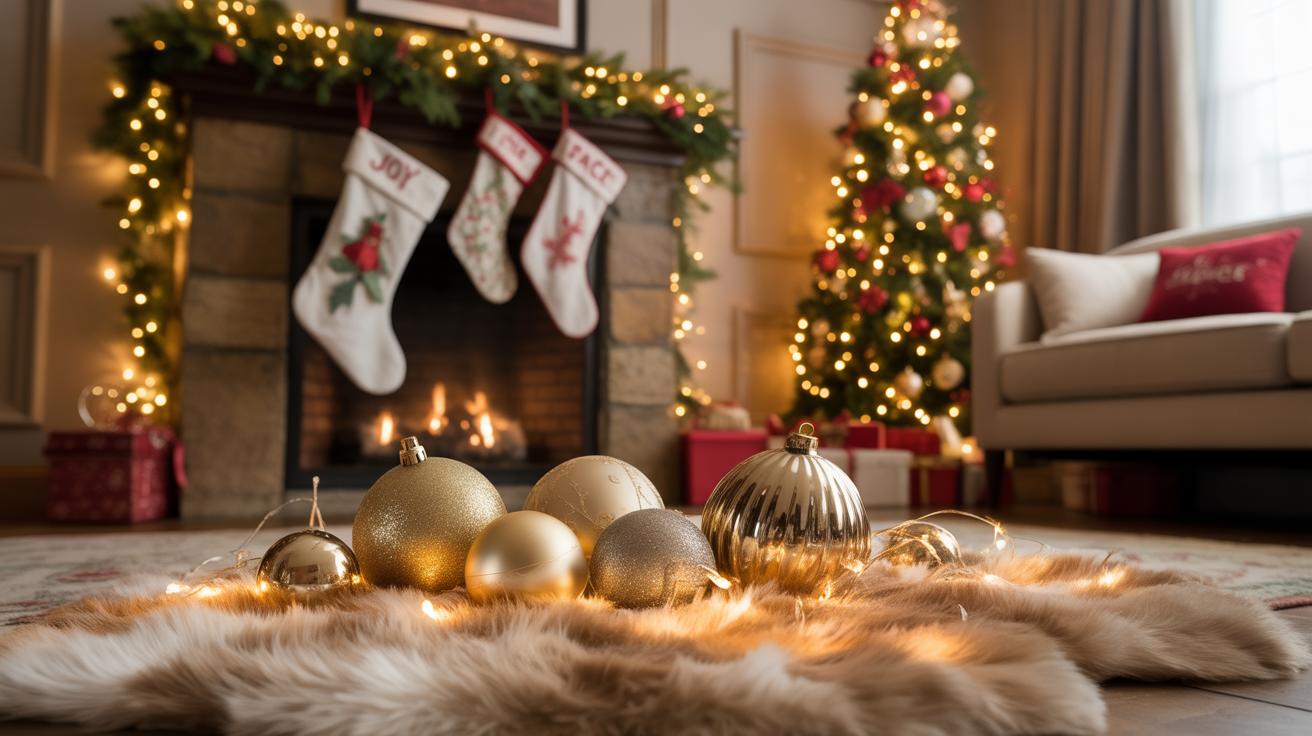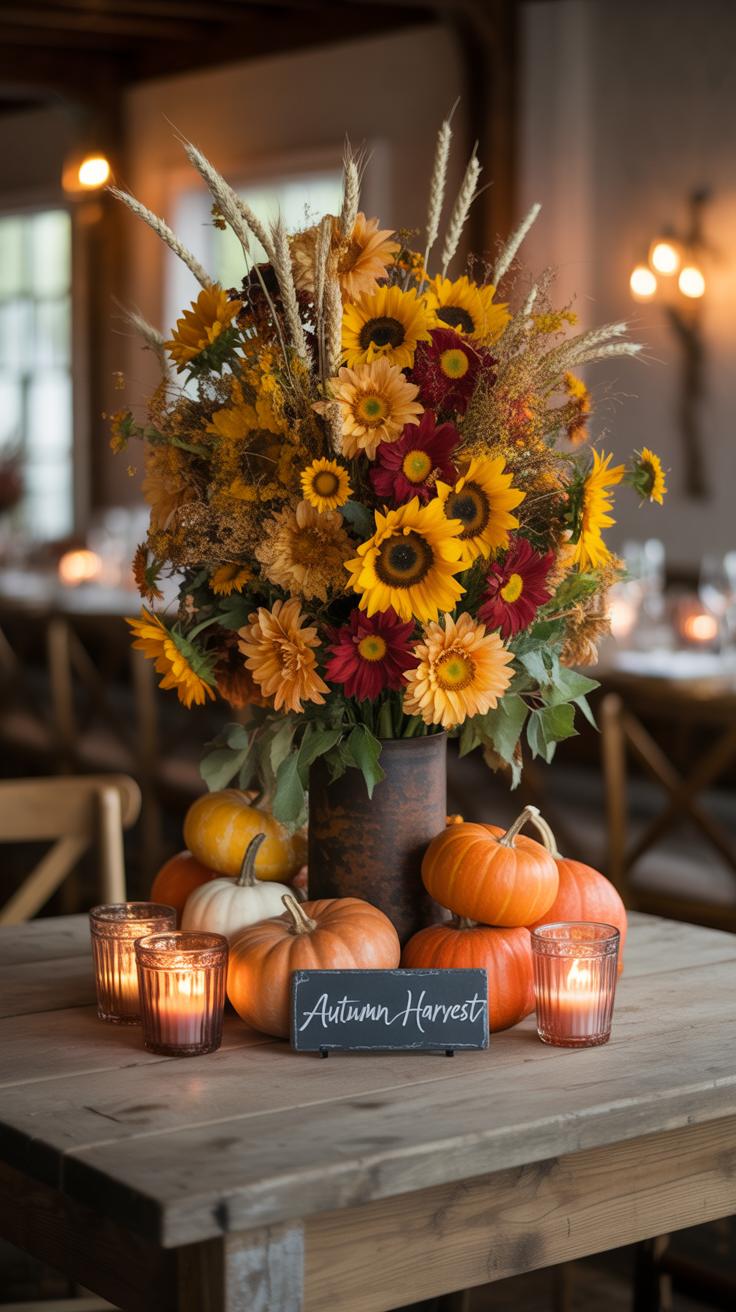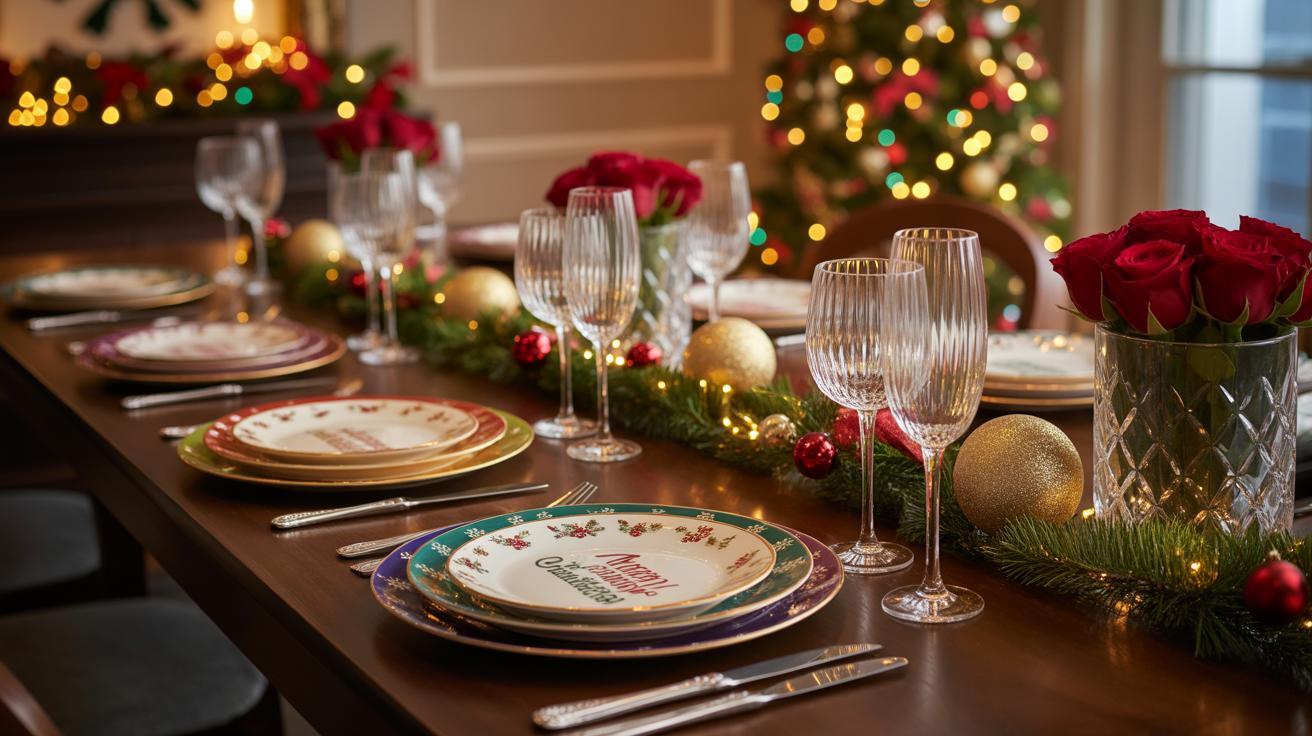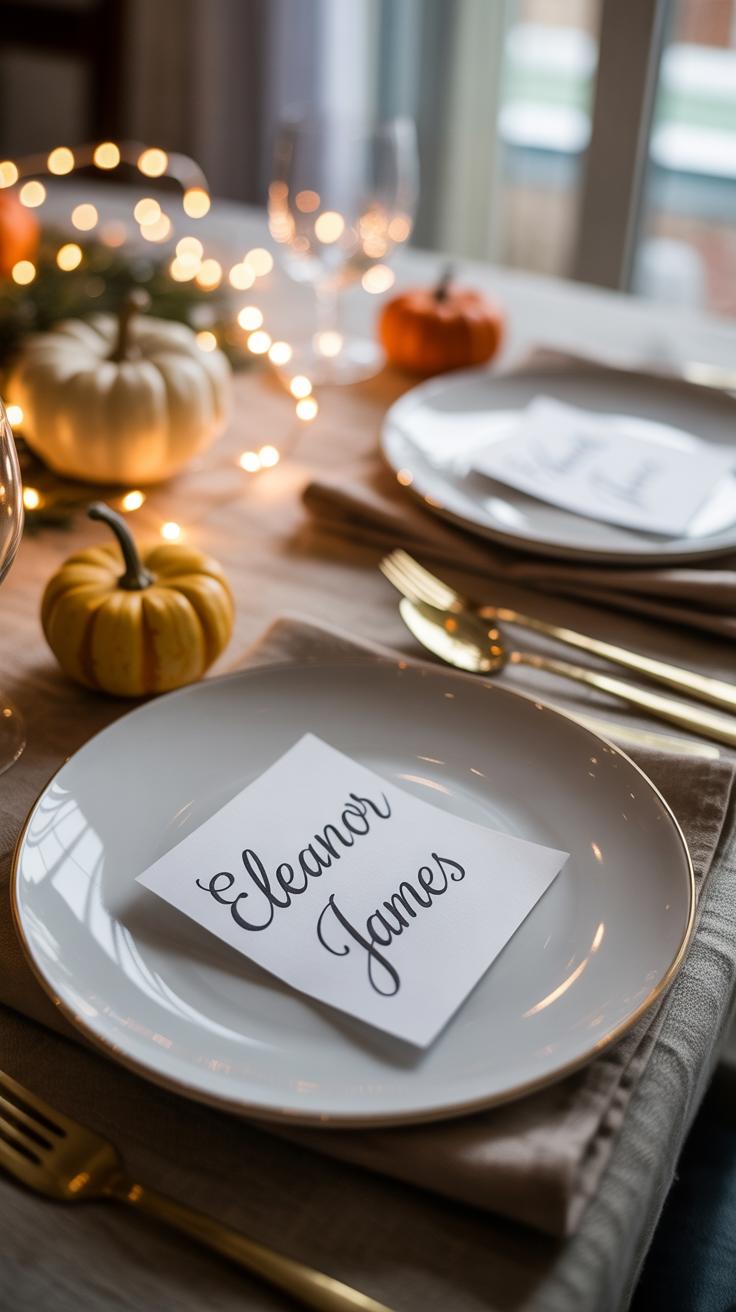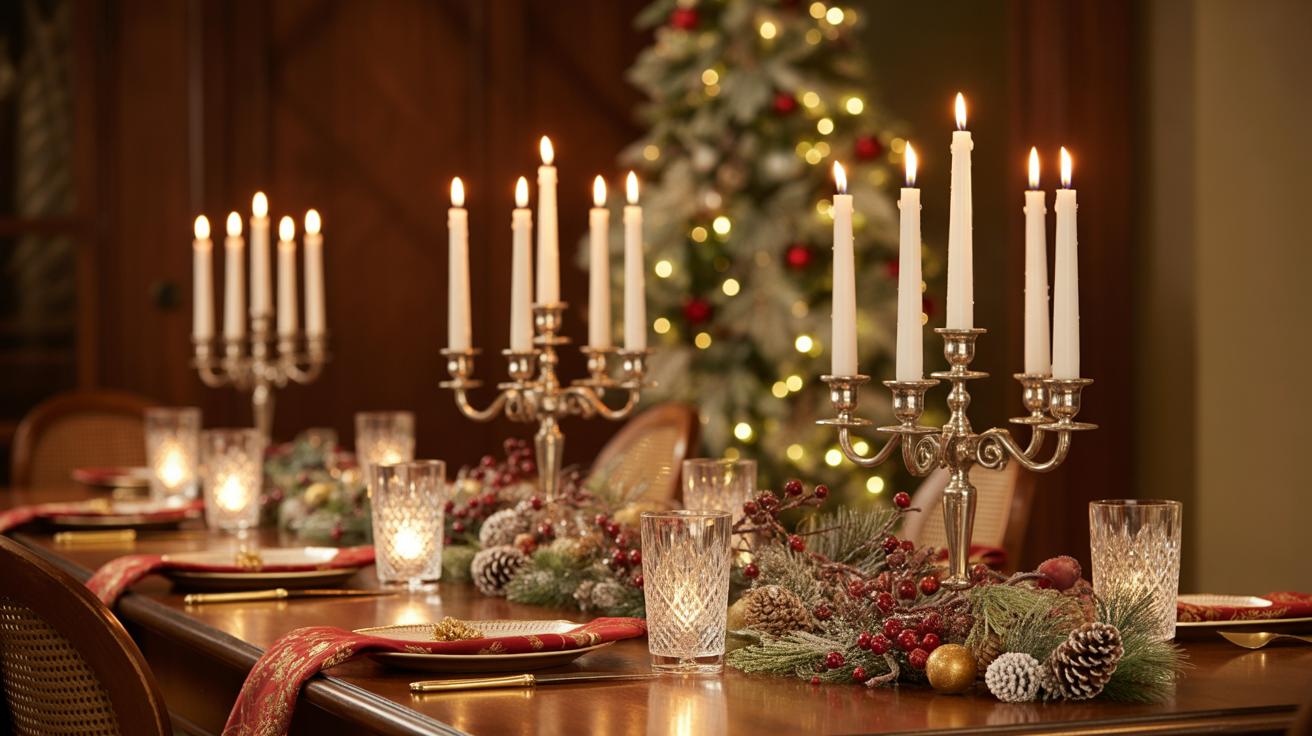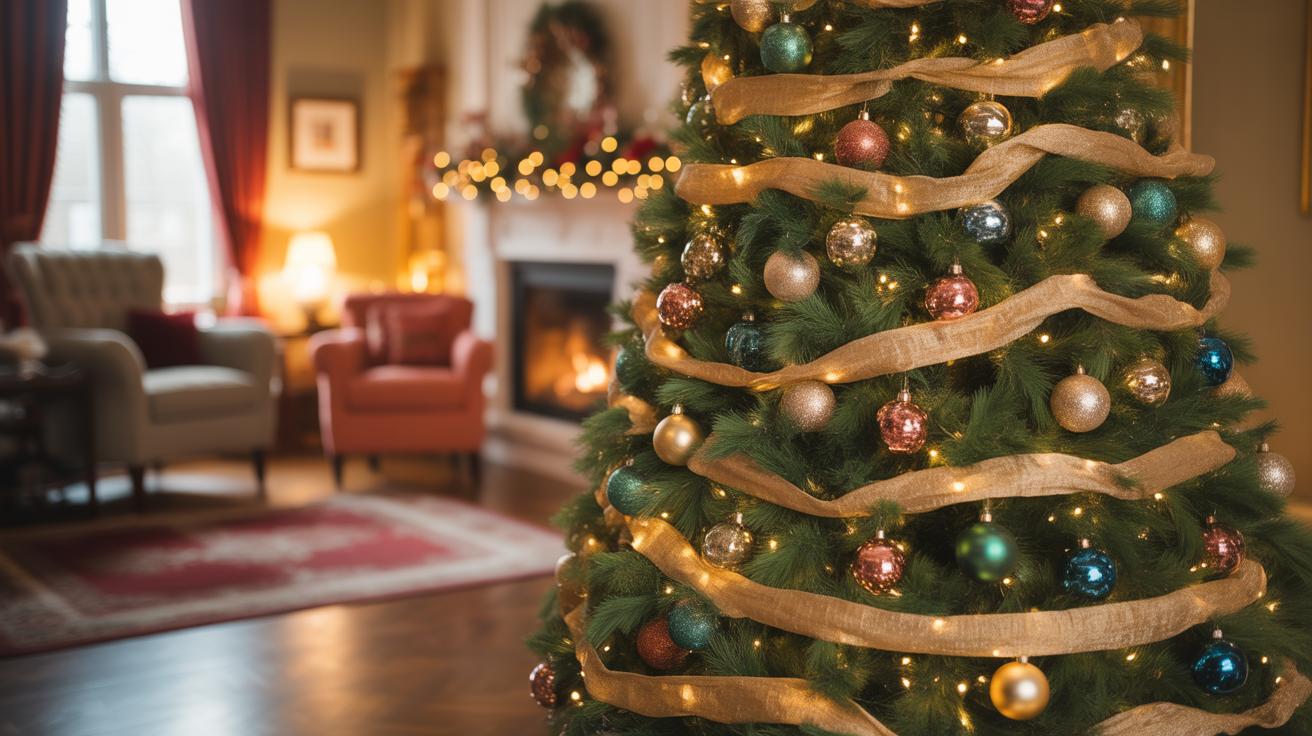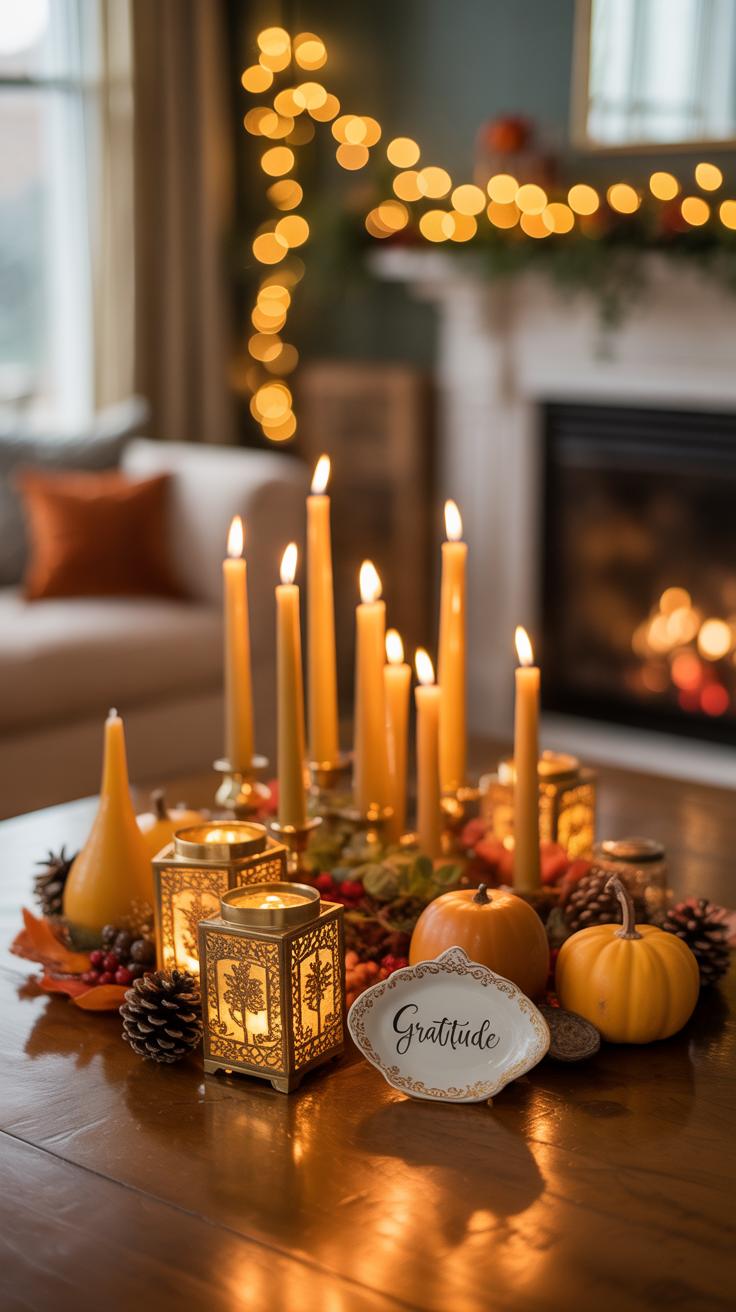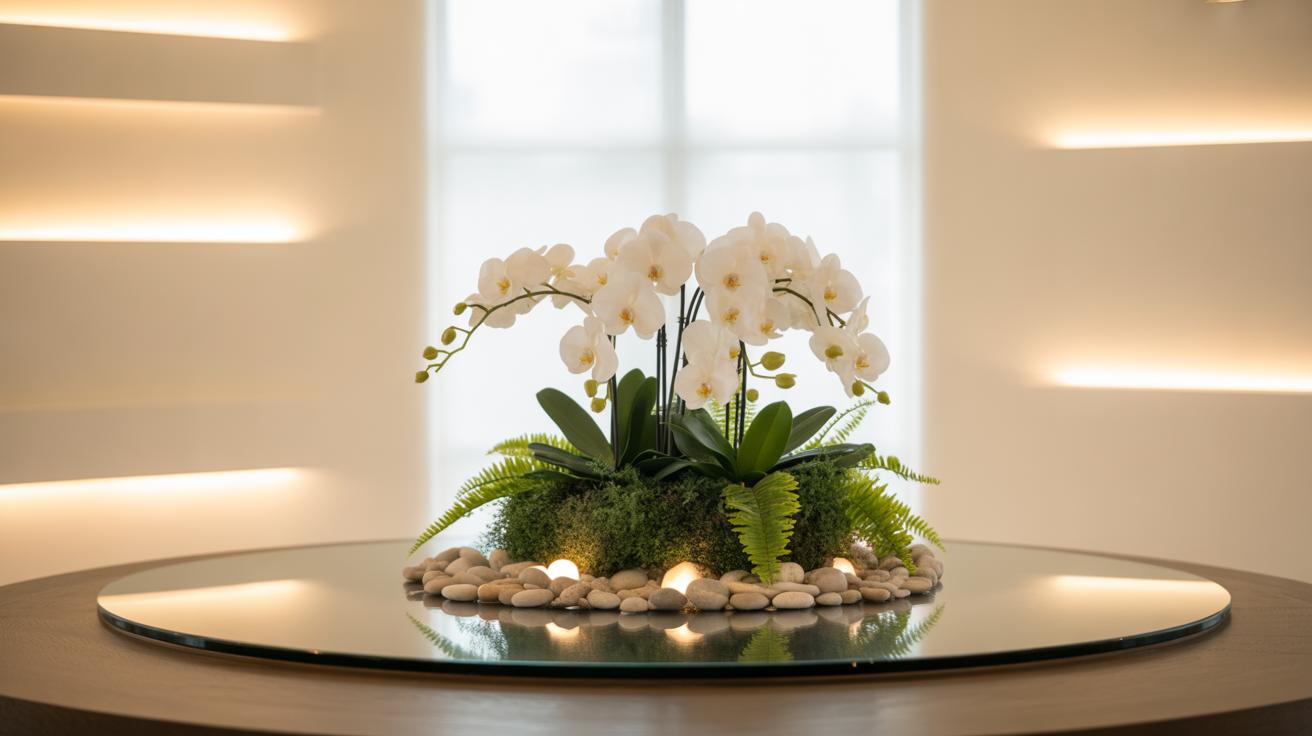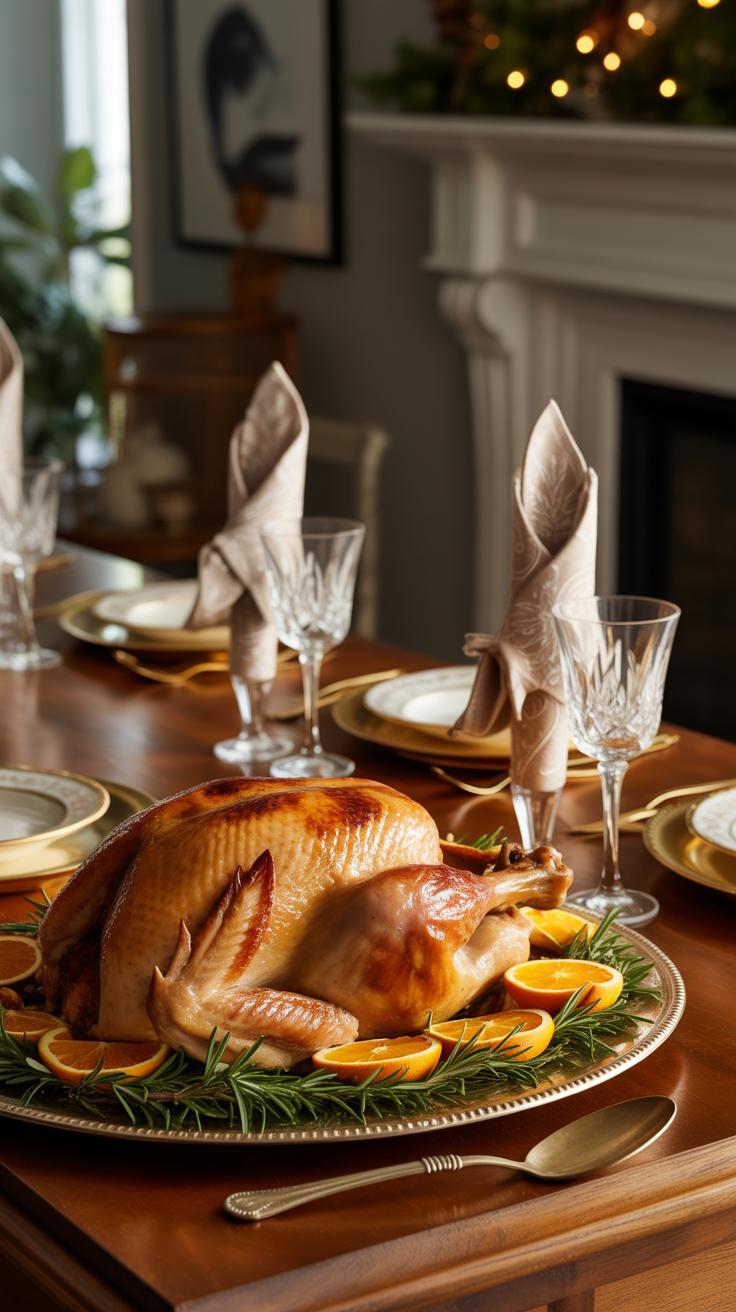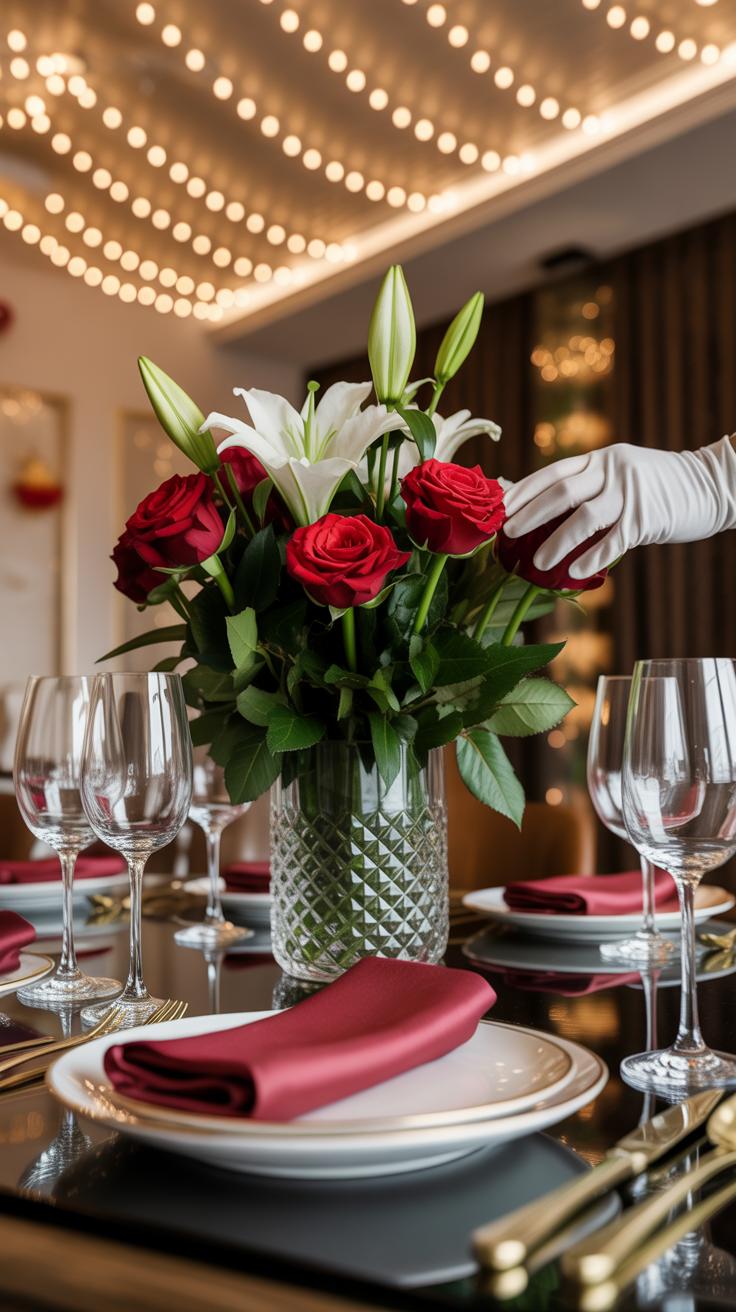Introduction
Thanksgiving is a time to gather with family and friends around a beautiful table. The way you set your table can make your holiday meal feel special and inviting. Thanksgiving tablescapes help you create a warm and festive atmosphere that impresses your guests and celebrates the season.
In this article, you will discover simple and creative ideas to craft stunning Thanksgiving tablescapes. From choosing tableware to adding seasonal touches, you’ll learn how to design a table that suits your style and makes your holiday meal unforgettable. Let’s explore how to wow your guests with every detail on your Thanksgiving table.
Setting the Foundation with Tableware Choices
Picking the right tableware really sets the tone for your Thanksgiving tablescape. It’s the base everyone sees first, so it’s worth paying attention to. Plates, glasses, and cutlery aren’t just practical—they help guide the style. Whether you want rustic charm or something more polished affects what to pick.
When it comes to plates, think beyond just the usual dinnerware. Porcelain, stoneware, or even earthenware all bring different textures and feelings to the table. Mixing materials can add warmth. For example, a matte stoneware plate paired with a glossy charger creates contrast that’s quiet but noticeable. And colors? Soft creams, whites, or deep autumn tones can shift the mood instantly.
Glasses and cutlery are equally essential. Traditional crystal glasses add a touch of elegance but sometimes go overboard if the rest is casual. I sometimes prefer simple glass tumblers with gold-rimmed edges—subtle but inviting. Cutlery, too, doesn’t have to match perfectly. Mixing polished silver with brushed brass can feel casual and chic, though matching sets offer a cleaner look.
Don’t worry about being too precise. Sometimes blending a few styles makes a more relaxed and welcoming setup. The main thing? Create a base that invites guests to sit down and feel comfortable while making the meal feel a bit more special.
Choosing Plates and Chargers
Selecting plates and chargers is like framing a painting; they highlight what’s on them. Think about size first—larger chargers provide a solid backdrop, framing smaller, more detailed plates. Layering plates with different sizes and subtle hues adds depth and interest to the visual setup. A neutral charger can make colorful plates pop without clashing.
Colors can be tricky. If you lean toward a classic Thanksgiving vibe, earthy tones like deep reds, forest greens, or warm browns fit well. But don’t feel boxed in; soft blues or grays might feel unexpected yet soothing. A patterned charger with muted colors can frame solid plates nicely without overwhelming the scene.
I remember one year using copper chargers paired with white plates and a few leafy details—it felt balanced but felt a little off until I swapped the flatware. That’s the thing—the pieces all talk to each other, so choosing chargers that complement but don’t compete with plates matters.
Selecting Glassware and Cutlery
Glasses and cutlery are often overlooked but are critical for completing the table. Do you want everything uniform or a bit eclectic? Matching sets give a neat, deliberate look. For instance, clear wine glasses with a simple design keep attention on the table decor. But mixing glassware styles, like pairing vintage goblets with modern water glasses, creates a story, albeit a more casual one.
Cutlery choices also influence vibes. Polished stainless steel is standard, reliable, and pairs with anything. Yet, brass or black matte cutlery adds personality. You might mix these for a layered effect, like using classic knives and forks but switching salad utensils for something bolder.
One thing I’d suggest—think about the feel when guests use the items. Heady, delicate glass might look lovely but feel fussy. Sometimes, practical choices that look good matter more since they make people comfortable eating, not just admiring.
Creating a Color Palette That Reflects the Season
Choosing the right color scheme can really shape how your Thanksgiving tablescape feels. Think about those traditional autumn colors—warm reds, deep oranges, soft yellows, and rich browns. They almost immediately call to mind the cozy, comforting atmosphere we associate with this holiday. Using these hues, you can create a setting that feels inviting and familiar. For example, layering burnt orange napkins over golden plates naturally adds warmth without trying too hard.
But, let’s be honest, not everyone wants a “classic” look. Some prefer something sleeker or subtler. That’s where neutral, pastel, or metallic palettes come in. Imagine soft taupes, gentle ivories, or even brushed gold accents giving the table a quieter, more modern vibe. It doesn’t scream Thanksgiving but still feels seasonal in its own way.
Sticking to a consistent palette ties everything together—from your tableware to linens and decorations. When your colors harmonize, the whole table feels intentional and polished. You might find that even a small pop of an unexpected color, like a muted blue or silver, can add interest without breaking the mood. It’s about balance, really.
Adding Natural Elements for Warmth and Texture
Bringing natural items like leaves, pumpkins, and pinecones into your Thanksgiving tablescape can change the whole vibe of the table. These elements add real texture—something that flat linens or smooth ceramics never quite achieve. You might think it’s just about looks, but there’s a feeling tied to nature’s touch, a sense of comfort that guests often pick up on, even without realizing it.
Leaves scattered gently across the table, or tucked under plates, create layers that catch the eye. Their varied shapes and subtle color shifts keep things from feeling too uniform. Pinecones add a rustic, grounded feel. And pumpkins? Well, they’re hard to beat for a festive, unmistakably autumnal touch.
Using Seasonal Foliage and Fruits
Try arranging small branches with berries or clusters of fruits like crabapples or figs as accents. These bits of harvest tell a story about the time of year without screaming “holiday décor.” You can weave leafy sprigs or bright berries into napkin rings or set them in low bowls along the table’s length. It’s a way of inviting the season indoors, though sometimes the arrangement ends up a bit messy or casual—which, honestly, can be part of the charm.
Incorporating Pumpkins and Gourds
When it comes to pumpkins and gourds, think beyond just lining them up symmetrically. Group them in odd numbers for a more natural feel. Use different sizes and shapes to create interest, maybe even mix in some muted or painted gourds for a subtle twist. Placing a medium pumpkin on a cake stand or turning a large gourd into a candle holder can elevate the décor. If your table is small, keep in mind that too many pumpkins can feel crowded—sometimes less is more, or at least, less is easier to live with during the meal.
Crafting Centerpieces That Catch the Eye
Choosing the right centerpiece for your Thanksgiving table can really set the mood, but the tricky part is finding balance. Size matters—too big, and it blocks conversation or crowds the table; too small, and it risks being overlooked. Think about the space between place settings and let the centerpiece sit comfortably without feeling like an obstacle course.
Material choice also plays a role. Natural elements blend easily with a fall theme, but pairing them with unexpected textures can add interest without overwhelming. For instance, wooden bowls mixed with soft flowers or smooth glass candle holders bring contrast. Sometimes less is more, though—simplicity can hold a quiet power.
Simple Floral Arrangements
Flowers like chrysanthemums and sunflowers are quite popular for good reason. Their rich colors fit the season and they last well, making them practical choices. You can create small bunches in rustic jars or tin cans, keeping the look relaxed but festive.
Try mixing varieties to avoid flatness—sprigs of wheat or eucalyptus can add unexpected texture. I often find cutting flowers a bit uneven gives the arrangement personality, even if it looks less formal. Don’t overthink it. Even a modest bunch can bring life to the table.
Creative Non-Floral Centerpieces
What if flowers aren’t your thing? Candle arrangements offer a warm, inviting glow. Group candles in different heights and widths on a tray or mirrored surface to catch light and create dimension. You might want to add small accents—mini pumpkins or acorns—to tie them to the holiday.
Alternatively, themed decorations like a collection of tiny gourds, harvest fruits, or handcrafted paper leaves can be quite charming. These pieces don’t demand water or upkeep, which can be a relief on a busy day. Remember, your centerpiece should invite guests in without shouting—it’s about complementing the meal, not competing with it.
Personalizing Place Settings for Each Guest
Adding personal touches to each place setting can quietly change the whole vibe of your Thanksgiving table. It’s not just about functionality; it’s about making each guest feel seen, appreciated, even a little special. You could start simple—name cards are an easy and classic way to do this. But think beyond that: small gifts like a tiny jar of homemade jam or a favorite candy tucked beside the plate can create little moments that linger long after the meal.
Custom napkin folds lend personality too, and they don’t have to be complex. Even a casual fold can look thoughtful when paired with a ribbon or a sprig of rosemary laid gently across. It makes you wonder, doesn’t it? How something so small makes a seat feel claimed, a presence acknowledged. You might notice guests lingering at their settings, smiling at those little details. It’s subtle, but that’s what works.
Designing Custom Name Cards
The beauty of name cards is you can keep them straightforward but still elegant. Perhaps use cardstock that echoes the color scheme of your centerpiece or napkins. Handwriting names adds a personal touch, though neat print works just fine, especially if you’re pressed for time. Think about adding a leaf, or a small piece of dried flower glued to the corner—nothing too fussy, but enough to hint at the table’s overall look.
If you want to get a bit crafty, fold a strip of paper into a tent shape or slip the card inside a small wooden holder or even a mini pinecone. Such effortless details ground your tablescape. It’s funny how something so small can stop people mid-conversation to glance, smile, or swap a glance of approval.
Napkin Folding and Decorations
Napkin folding does not have to be intimidating. A simple rectangle fold or a loose roll can be elevated with a natural touch—like a thin ribbon wrapped around, or a cinnamon stick tucked beneath. You might try the classic “pocket fold” to slip in a small menu or a handwritten note for each guest. It’s cozy without feeling staged.
Try folding the napkin into a triangle and layering a few autumn leaves on top, or keep it casual by slipping a sprig of fresh herbs like thyme or sage under a band of twine. The scent alone feels homey. The key is to keep the napkins aligned with the rest of the decor while also giving each place a bit of unique charm. Sometimes, these small choices—folds, ties, natural elements—set the tone even before the first bite.
Lighting Your Table to Set the Mood
Lighting plays a surprisingly big role in shaping your Thanksgiving tablescape. It can shift the mood from lively chatter to something softer, more intimate. Candles are the classic choice—there’s something about their flicker that just pulls people in. But you don’t have to rely on candles alone. Fairy lights, with their tiny, warm glow, can add a touch of magic without overwhelming the space. Ambient lighting, like dimmed overhead fixtures or softly glowing lamps, helps fill in the shadows without stealing the spotlight.
When using candles, placement becomes key. Too close to flammable decorations or too high and harsh, and the effect is lost—or worse, risky. I think pairing different candle heights creates visual interest—tall tapers alongside short votives work well.
You might wonder about safety. Choose unscented candles to avoid overpowering aromas that could compete with your meal. And always keep a watchful eye on open flames. Flameless LED candles can mimic the effect but sometimes lack that authentic warmth.
To build on candles, string lights or lanterns are great options for extra layers of glow. Drape string lights along the table edge or scatter lanterns nearby to extend the cozy feel beyond just the tabletop. It’s tempting to go all out, but balancing these elements carefully keeps things inviting rather than cluttered. After all, good lighting invites guests to relax—and maybe linger a little longer at the table.
Incorporating Traditions and Themes Seamlessly
You might find that blending family traditions into your Thanksgiving tablescape adds a layer of meaning that no fancy decor alone can match. Think about those small, familiar touches—like Grandma’s lace table runner or a particular color your family always favors during the holidays. These elements can ground your design, making it feel personal rather than just pretty.
Try to pick a theme that fits your family’s personality and sticks close to the holiday’s spirit. This could be something simple, like rustic warmth, or more specific, maybe vintage harvest. The thing is, once you choose a path, keep it consistent to avoid a jumbled look that distracts rather than invites.
When it comes to traditional symbols—cornucopias, turkeys, pumpkins—they don’t have to shout tradition. Subtlety works well here. Using a small cornucopia centerpiece or turkey-shaped napkin rings can nod to classic Thanksgiving without overwhelming the table.
Some families might feel tied to certain colors or items, but mixing these traditions with fresh themes can be tricky. I’ve seen tables where a bright modern palette fought against old-timey pine cones and felt a bit off. So, weigh your choices carefully. Maybe reimagine those symbols in a new way rather than straying too far or clinging too tightly.
Ultimately, your tablescape should encourage connection—the kind that stirs memories and sparks conversation, not just compliments. What parts of your family’s Thanksgiving story do you want your table to whisper? That little question can guide many decisions.
Finishing Touches and Final Checks
As you near the end of your tablescape setup, take a moment to step back and really look at the balance between decor and open space. The goal is to make the table feel inviting—not packed so tightly that guests feel boxed in, but not so sparse that it appears incomplete. Often, a few well-chosen elements spaced thoughtfully can actually draw more attention than many items clustered together.
One practical way to judge this is by imagining reaching across the table. Are the centerpieces and decorations low enough to allow easy eye contact? Can guests pass dishes without knocking over a candle or a pumpkin? Try moving a few pieces around until there’s a natural flow and breathing room.
When it comes to guest comfort, think about utensils placement and how easy it will be to access dishes. Offering enough elbow room can be surprisingly overlooked. Even if your table is large, cluttered settings can push plates and napkins closer, making the meal less comfortable. Place cutlery so guests don’t have to hunt for forks or spoons. If you’re using shared dishes, ensure they won’t block individual settings or force awkward passing angles.
Sometimes it’s tempting to cram in every decoration you love, but your guests will probably appreciate space to savor the food more. You might find that removing just one or two items creates a more relaxed, enjoyable setting. After all, they’ll spend most of the time interacting over the meal, so comfort matters just as much as looks.
Conclusions
Designing a Thanksgiving tablescape is about more than just decoration; it reflects your care for your guests and the joy of the season. By focusing on cohesive colors, seasonal elements, and thoughtful placement, you enhance the dining experience and create lasting memories.
Remember, your Thanksgiving table is a canvas for your creativity and hospitality. Use the tips and ideas shared here to build a tablescape that invites warmth and celebration. Your guests will appreciate the effort you put into making the holiday both beautiful and meaningful.

